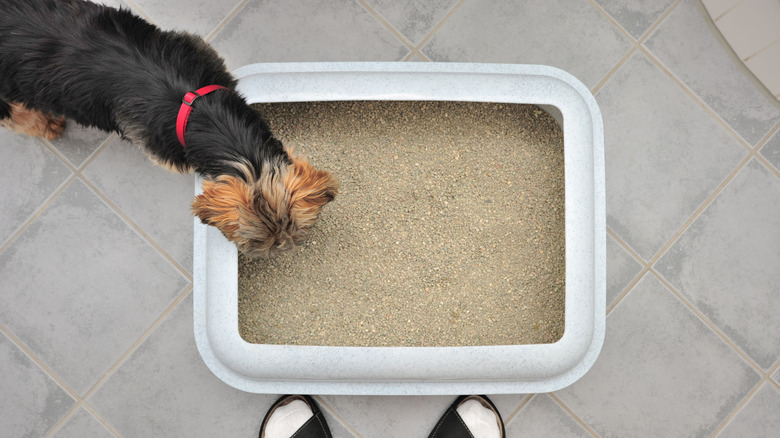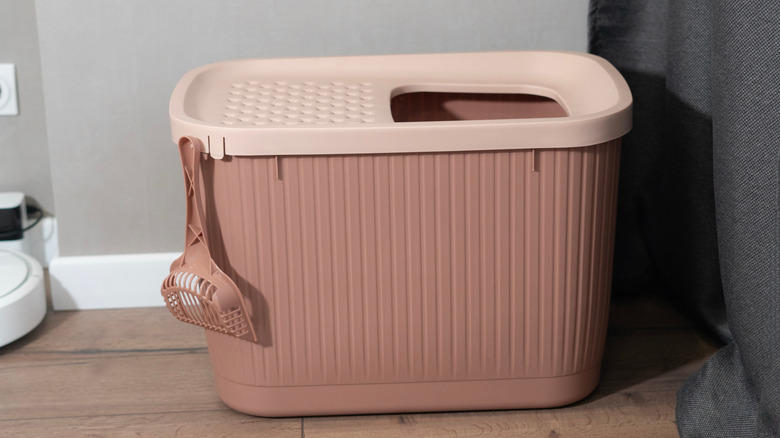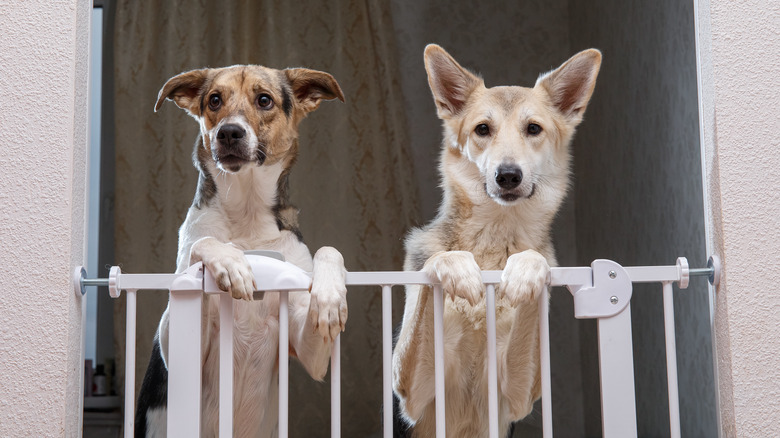Crucial Tips For Keeping Your Dog From Eating Cat Litter (And Why They Did It In The First Place)
We may receive a commission on purchases made from links.
It can be such a joy to share your home with a dog and a cat who are best friends and watch them snuggle together. If you're lucky, they might even play together. However, one of the downsides to having a canine and a feline under the same roof is that some dogs eat kitty litter, indirectly. The litter isn't the target; it's the feces buried underneath it.
Referred to as coprophagia, eating feces occurs because dogs can smell food through the feces — in this case, cat food. Cat food is generally higher in protein than dog food, hence the appeal. Dogs might also be drawn to the food odor to satisfy a nutritional deficiency. Regardless of the reason, you can easily put a stop to your dog's unwanted excrement-eating behavior and say goodbye to smelly poop breath with a few crucial tips. To keep your dog from eating cat litter and poop, get a top-entry, high-walled box, raise the height of your box, or place the box in a room or area your dog can't access.
Buy a high-walled, top-entry litter box, or elevate the one you already have
If you have a small dog, you can prevent them from accessing the litter box by switching to a high-walled, top-entry box. By the way, the best top-entry litter boxes are a great solution for litter tracking as well. If your dog were to stand on their hind legs or jump on top of the box, they likely wouldn't be able to access the litter level. Even if you have a tiny-sized pup, your dog would have to jump into the box the way a cat would, but without training, it's improbable that they'll attempt this.
While the top-entry-style litter box is a great option to prevent dogs from eating litter/cat poop, it might not work for all dogs. Tall dogs or very persistent, agile small or medium ones might still manage to access the litter. If this is the case, raising the height of the box should help. A few inches might be enough for a small or medium breed, but you might need to elevate it 6 inches or more for taller dogs. Just be sure to gradually acclimate your cat to this change, too, so they don't stop using the box. You can place the litter box on a crate or similar item, or use furniture risers. A healthy cat can jump 6-8 feet high, so you don't have to worry about it being too lofty for kitty.
Completely block your dog's access from the litter box
Perhaps the easiest way to keep your pup from eating out of the litter box is to make it invisible to them. Although shrinking it like Ant-Man would be a nice way to make it almost invisible — except you'd have to shrink your cat, too — placing it in a room your dog can't access is the more realistic solution. This could mean putting the box in an enclosed room or area and adding a cat door that's large enough for cat access only. An electronic pet door, like Cat Mate's Microchip-Activated Cat Flap, can also be a good option.
You could also put up a dog gate that still allows cats through, such as the Carlson Extra-Wide Pet Gate with Pet Door, to prevent your dog from accessing the part of your home where the litter box is set up. With this option, you don't have to worry about putting holes in your doors or installing a cat door. Remember, your cat will be able to clear the gate, so they'll still have free reign of the house, assuming all the doors are open. No matter what option you pick, keeping your dog out of your cat's litter will keep your dog's tummy — and your household — happier.


